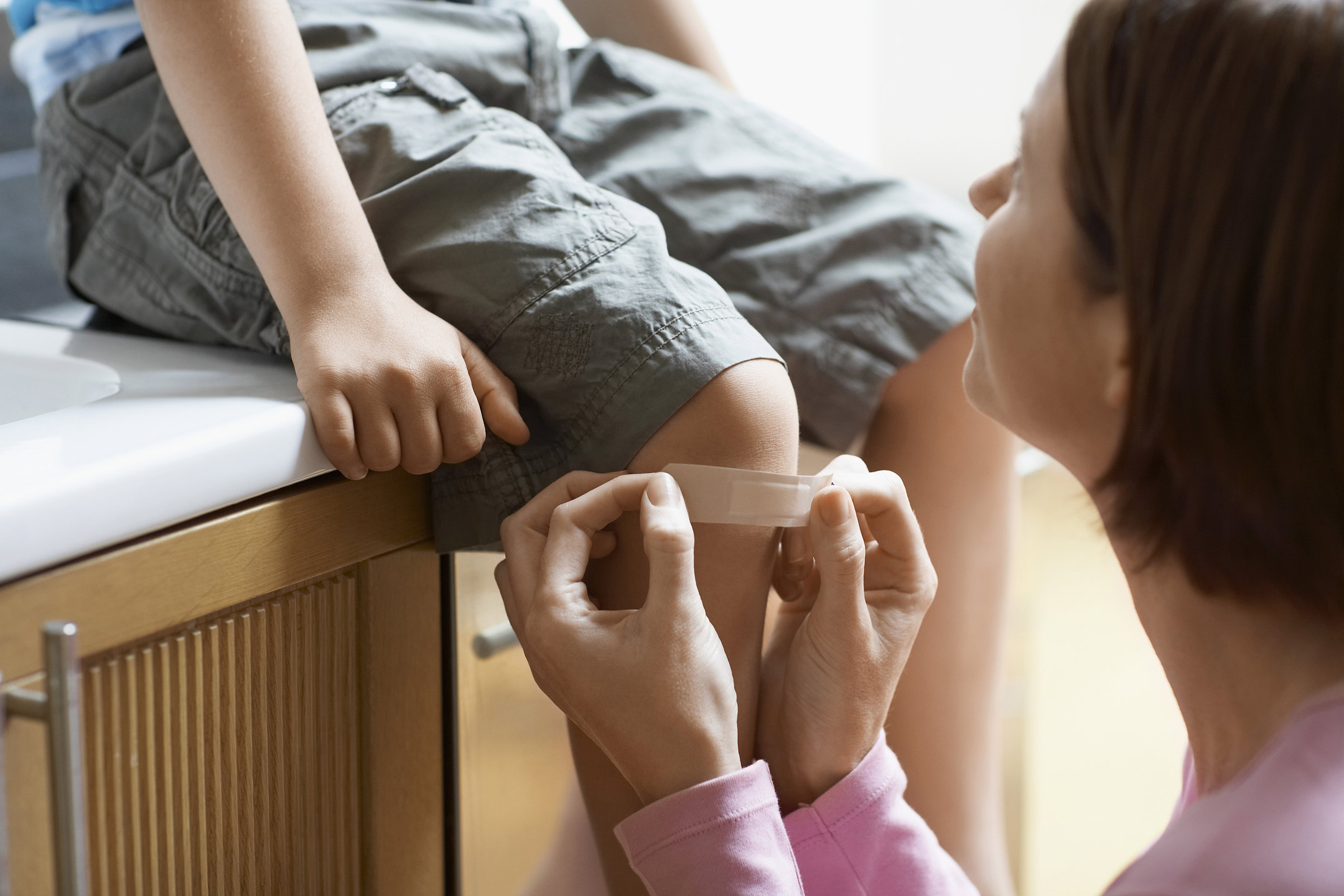
26 Sep Why it’s time to rethink how we treat kids’ cuts and scrapes
Lisa Burling looks at outdated myths and the new awareness of advanced wound dressings.
Every parent knows the routine: a tumble in the playground, a grazed knee, and a dash to the bathroom cabinet. For generations, we’ve reached for a plaster, dabbed on some antiseptic cream, or even left the wound to “air out” and scab over. But new research shows that many of these go-to wound care methods might actually be slowing our children’s healing and even putting them at greater risk of infection.
A national survey1 of 1,500 Australians has revealed that almost two-thirds of us (62%) still believe the myth that minor wounds heal faster when left uncovered to dry out. Another 67% still rely on basic plasters, and nearly half (43%) turn to antiseptic creams or ointments. By contrast, only 11% are using advanced wound dressings, the kind designed to create an optimal healing environment and speed up recovery.
 Aussie Pharmacist and wound care expert, Karen Carter
Aussie Pharmacist and wound care expert, Karen Carter
The Myth of “Drying Out”
Karen Carter is a pharmacist with a special interest in wound care and she says it’s time to update our thinking. “Many people still think wounds should be left uncovered to dry out, but this actually acts like a speed hump in the healing process,” she explains. “Modern best practice is ‘moist wound healing,’ which creates the optimal environment for recovery, reduces pain, and lowers infection risk.”
For parents, that means rethinking the advice many of us grew up with. Plasters fall off and need to be changed regularly, which is why choosing a dressing that can stick and stay on, with minimal dressing changes, is essential to help keep the wound moist and promote faster healing. Instead of letting a cut breathe or waiting for it to scab, advanced dressings help the wound stay moist, protected, and undisturbed – all key factors in faster healing.
Less Stress for Busy Families
If you’ve ever had a child peel off their plaster within hours of applying it, you’ll know how frustrating (and messy) wound care can be. The survey found almost half of Australians (49%) change plasters once a day, but frequent changes can actually disrupt healing.
“Every dressing change cools the wound surface and can dry it out, delaying recovery,” says Carter. “Advanced wound dressings stay on longer, protect better, and make wound care less stressful, especially for parents managing active kids.”
Waterproof features and fewer dressing changes were high on the wish list for survey respondents. Half said they value waterproof dressings – a lifesaver when kids refuse to stay out of the pool or bath – while 31% want products that don’t need replacing as often.
But awareness remains low. The survey showed that 62% of Australians either don’t understand or have never heard of advanced wound dressings. Encouragingly, once parents learn about the benefits, most are open to change: 64% said they’d be convinced to switch if it meant better healing outcomes for their families.
Perfect Timing for School Holidays
With school holidays just around the corner, many parents are bracing for the inevitable bumps, scrapes, and blisters that come with endless bike rides, tree climbing, and outdoor adventures. Updating your first aid kit with advanced wound care products can help take some of the stress out of these moments.
Looking after children’s health is often about unlearning old habits and embracing new knowledge. Just as we’ve updated our thinking on sun safety, nutrition, and screen time, wound care is another area where science is showing us a better way.
“By debunking outdated myths and raising awareness of advanced wound dressings, we can help Australians – and especially parents – feel confident that they’re providing the best possible care for even the smallest cuts and grazes,” Ms Carter concludes.
REFERENCE
- The Digital Edge Weekly Omnibus Survey conducted amongst 1,500 Australians in April 2025. Internal Report.




